Tips for Growing Asparagus in Raised Beds: Raised Garden of Your Own
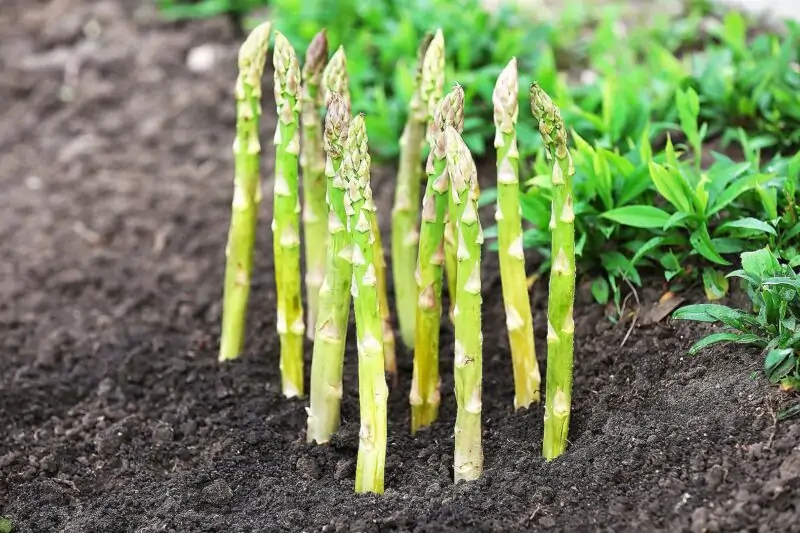
Have you ever thought of growing asparagus in raised beds? Nothing beats the pleasure of growing your own fresh and tasty asparagus, and raised beds it’s where the asparagus thrives. They offer ideal growth conditions for their extremely long roots since they allow the plants to have great drainage and deeper soil. Additionally, they make it simple to maintain your garden weed-free, leaving your plants plenty of room to grow.
The capacity to modify soil quality and moisture levels throughout time is one of the most significant advantages of growing asparagus in a raised bed. Not only that, but they are easier to maintain than ordinary garden beds. As it was said, you can spend less time working in the garden and more time enjoying the benefits of your hard work because there is no need for intensive weeding.
In this article, we will guide you through the details of planting asparagus crowns in raised beds, from choosing the right materials to all the preparation essentials you must consider. We will describe how to harvest your asparagus in a raised garden.
So, take a moment to read the guide in case you are interested in growing this delicious perennial plant on your own.
Why Plant Asparagus in a Raised Bed?
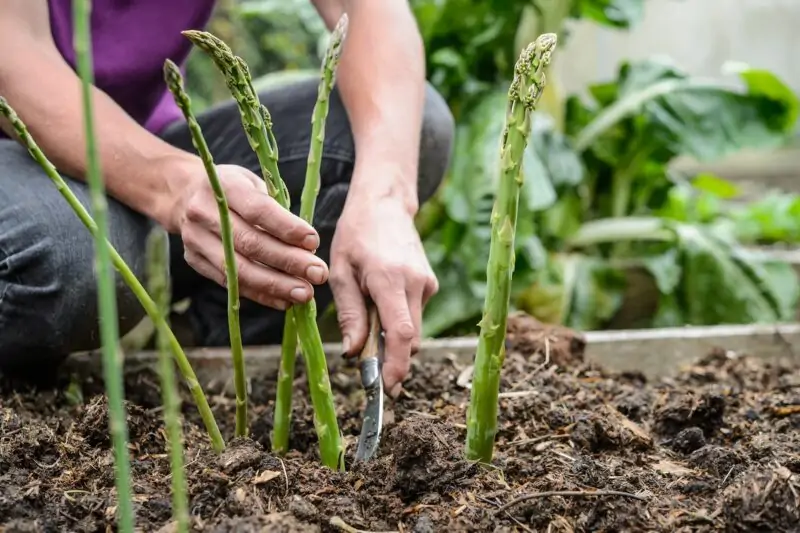
Raised beds have numerous benefits over standard in-ground planting methods, which make them an excellent alternative for asparagus cultivation. Here is why your asparagus spears will grow large and healthy if you use this method.
Provides Better Drainage
Asparagus needs well-drained soil, therefore, raised beds to provide great drainage. This is especially beneficial in places with significant rainfall or soils that are clayey. Excess water could run away more quickly when you keep your asparagus in soil that is elevated above ground level, eliminating the risk of asparagus roots starting to rot and other moisture-related concerns.
Easier To Maintain
Another great thing that any guide to growing asparagus needs to mention is that raised beds are far more manageable on a daily basis. This is due to the fact that they are often filled with weed-free soil, which makes it easier to maintain a weed-free garden. Also, since the soil in raised beds is loose and simple to navigate, you can quickly and simply remove any undesirable plants and keep the bed in pristine order. What’s more, it will be easier for you to get rid of any asparagus beetles and other pests.
Besides, taller raised beds can be built to lessen the amount of bending necessary for garden maintenance. This is especially useful for elderly gardeners or those who have mobility challenges and find it difficult to bend down for long periods of time. Increasing the soil level for your plants to grow in can make it simpler to reach and work on your plants without hurting your back. All in all, a raised bed needs less attention, which is a good thing.
Brings More Stylish Vibes
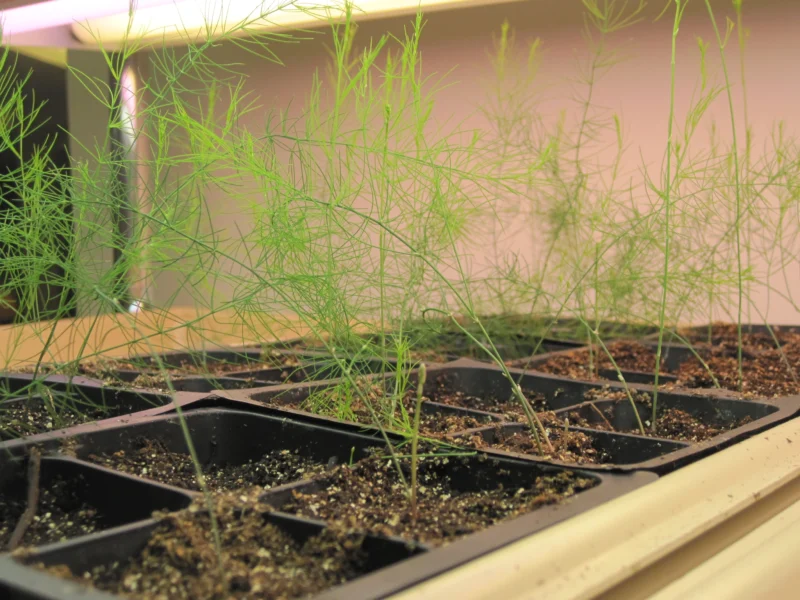
Have you noticed that planting your asparagus in tall raised garden beds can bring a lot more aesthetic to your home than using a traditional planting method? This is due to its delicate and wispy fern-like foliage that can catch any visitor’s eye. Asparagus will grow into a beautiful fern-like shrub that can spark a discussion and dominate the spotlight. Its distinctive texture and vivid green hue make it a natural and calming complement to any indoor or outdoor space.
So in case the practical reason for bed asparagus is not enough for you, the stylish vibes of asparagus fronds can surely be a decisive factor.
Tips for Growing Asparagus: Location and Materials
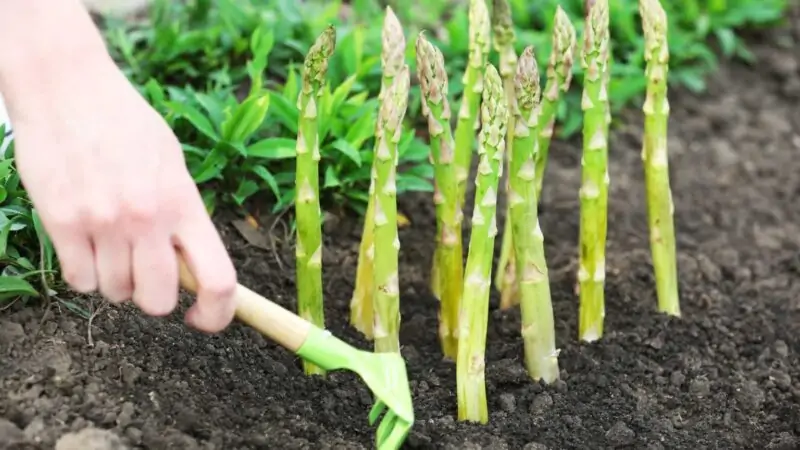
Since we have already covered the essential advantages of planting asparagus seeds in raised beds, now let’s talk about the significance of finding the ideal location in your garden and gathering all of the essential equipment. Despite the fact that it might seem a little bit challenging at first glance, this process can be just as enjoyable and thrilling as harvesting asparagus.
Location
The first and most significant factor that you really need to take into account is sunlight. All asparagus varieties thrive in direct sunlight; therefore, choosing a location in your garden that receives at least 6 hours of bright light every day is the best decision you can make in terms of location.
Besides, you can check whether the area is well-drained or not and if it has easy access to water. You surely do not want your asparagus rows to dry out in the heat of midsummer.
A lot of people who grow asparagus for the first time often overlook the importance of shielding your beds of asparagus from high winds. The reason behind it is pretty simple: strong winds have the potential to uproot and harm tall, top-heavy plants completely. So you probably want to avoid that happening at all costs. Thus, we recommend you consider placing a garden plot close to a wall or fence that will offer some protection from the wind.
Last but not least, accessibility is a factor enormously influences whether it is easy to grow your asparagus ferns. While growing asparagus plants in raised beds, remember that they should be freely accessible from all sides so that you can harvest them without putting too much effort. Similarly, it will be best if you avoid any location where approaching your asparagus patch requires climbing over obstacles or investing the physical effort.
Materials
There are several major things we recommend you take into account in terms of picking the right materials. First of all, you should make sure the tools are suitable for growing food before you decide to use them. Experts consistently advise against using treated wood or any other materials that can contain harmful chemicals. After all, nobody wants to get risky when it comes to homegrown food.
Generally speaking, cedar, redwood, and cypress are the most common picks. This is due to the fact that these materials are naturally resistant to rot and annoying insects. Yet they are usually more costly than other alternatives. So in case you are on a tight budget, pressure-treated wood can be an excellent substitute.
It should also be noted that concrete blocks or bricks are another cost-efficient options that are strong and long-lasting, and they may offer your raised bed a distinctive and even fashionable look.
Last but not least, you should buy asparagus itself. Picking asparagus can be anything from simple, if in doubt, as the gardeners in your local nursery for advice.
How to Grow Asparagus in Raised Beds: Harvesting
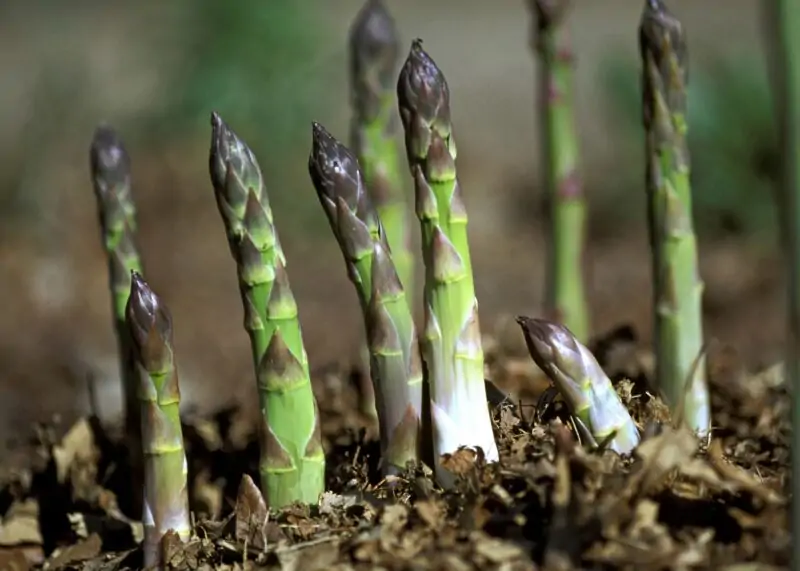
Once you have gathered all the essential equipment and know which are the most useful materials to use, it’s time to discuss the harvesting process itself and how it should be done.
The major fact to know is that asparagus is a perennial plant that is usually harvested in the spring when the spears are between 6 and 8 inches tall. Cutting the spear with a sharp knife just below the soil line is the secret to collecting them successfully. This is the best way to avoid damaging any emerging spears in the area and to ensure that there are many spears per plant.
How should your asparagus bed be cared for? Allow the spears to mature and turn into ferns after their growth is complete. These ferns will aid in recharging the roots’ reserves of energy for growth the next year. Cut them down to the ground whenever the frond grow old and begin to turn yellow or brown, and throw them in the compost bin.
The final key factor you need to consider is disease avoidance and pest control. Do not forget that there are pests that frequently damage plants, such as slugs and asparagus bugs. If you want to grow plants that are totally healthy, clean the bed carefully and thoroughly, no matter the circumstances. So if you want to maintain cleanness and stop the spread of diseases, experts recommend removing any dead or ill foliage right away. If your bed becomes clattered with ill leaves, this really spells trouble.
Raised Garden Beds: Frequently Asked Questions
Indeed. Not only does it well, but asparagus can thrive in raised beds. In fact, It is a truly wonderful method to grow these plants since can provide more inches of soil, which is good for asparagus’s long roots. What’s more, raised beds are also easier to care for on a daily basis since there are fewer weeds to cope with and less bending over needed.
There are a few things you could try if you want to produce thicker asparagus. First and foremost, give your asparagus lots of room to grow. Crowding can cause spears to become thinner. Also, make sure to keep the soil wet. Water is a favorite of asparagus! You may also try adding compost or other organic materials to the soil to help your asparagus grow. Finally, patience! Asparagus can take several years to mature, so do not be disheartened if you don’t see thick spears straight away.
Final Thoughts
Planting asparagus crowns in raised beds makes it much easier to care for and is surely a tasty and nutritious addition to any garden. The key thing to remember is to find a sunny spot and the appropriate materials and to be patient while they grow.
You do not even need to put too much effort in order to gather your own fresh plants and dazzle your friends and family with your gardening abilities.
So, what are you holding out for? Start growing asparagus in raised beds right away!